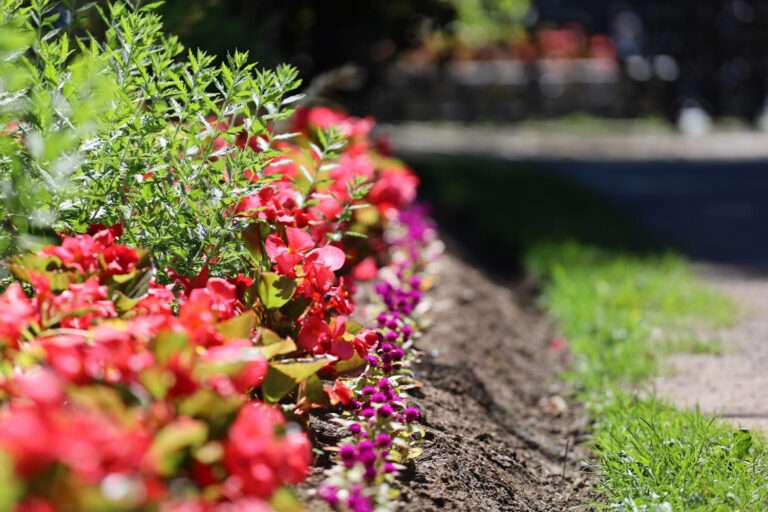Seasonal Lawn Care Strategies: Keeping Your Grass Lush Year-Round
Maintaining a beautiful, healthy lawn throughout the year requires more than occasional mowing and watering. Seasonal changes drastically affect grass growth, soil health, and the overall appearance of your lawn. To keep your commercial property’s turf looking its best, it’s essential to adopt a strategic approach tailored to each season.
In this blog, we’ll guide you through effective seasonal lawn care strategies that ensure your green spaces stay vibrant, resilient, and visually appealing throughout the year. Whether you manage a public park, a school campus, or a corporate landscape, these practical tips will help you maintain a pristine lawn every season.
Why Seasonal Lawn Care Matters
Lawn care is not a one-size-fits-all task. Each season brings its own challenges, from rapid growth in spring to frost damage in winter. Ignoring seasonal variations can lead to weak, patchy turf, increased pest problems, and even soil degradation. A proactive and season-specific approach ensures that your lawn remains healthy and attractive year-round.
Seasonal care strategies are crucial because they:
- Enhance lawn resilience to weather extremes.
- Promote strong root systems and dense grass cover.
- Reduce maintenance costs by preventing major issues.
- Maintain a professional, welcoming appearance.
Spring: Revitalising Your Lawn After Winter
Spring is the season of renewal, making it the perfect time to repair winter damage and encourage new growth. Start by clearing any debris, such as leaves and fallen branches, which may hinder grass recovery.
Essential Spring Lawn Care Tips:
- Aerate the Soil: Relieve compaction to allow oxygen and nutrients to reach the roots.
- Fertilise Early: Apply a balanced, slow-release fertiliser to boost growth.
- Overseed Thin Patches: Fill bare spots with resilient grass varieties like perennial ryegrass.
- Control Weeds: Use pre-emergent herbicides to prevent common spring weeds from taking hold.
- Mow Regularly: Keep grass at the recommended height to encourage dense growth and discourage weeds.
Pro Tip: Apply a moss killer if your lawn shows signs of moss development, as damp winter conditions often promote moss growth.
Summer: Managing Heat Stress and High Foot Traffic
Summer presents challenges such as drought stress and increased wear from recreational use. The goal is to maintain grass health while minimising water usage.
Essential Summer Lawn Care Tips:
- Water Deeply and Infrequently: Encourage deep root development by watering early in the morning.
- Raise Mower Height: Taller grass provides shade to the soil, reducing moisture loss.
- Apply Mulch: Retain soil moisture and keep roots cool.
- Monitor for Pests: Look for signs of grubs, chinch bugs, or fungal infections.
- Spot Treat Weeds: Avoid full herbicide coverage during hot spells to prevent turf stress.
Pro Tip: Consider installing a temporary barrier around high-traffic areas during peak summer events to reduce damage.
Autumn: Preparing for Winter
Autumn is the time to strengthen your lawn’s resilience to harsh winter conditions. Focus on fortifying root systems and removing thatch.
Essential Autumn Lawn Care Tips:
- Scarify the Lawn: Remove thatch to improve air circulation.
- Overseed and Topdress: Fill sparse areas to maintain density.
- Apply Autumn Fertiliser: Use a phosphorus-rich blend to boost root development.
- Aerate Again: Relieve summer compaction and enhance water infiltration.
- Leaf Clearance: Regularly remove fallen leaves to prevent suffocation and disease.
Pro Tip: Fertilising in autumn helps the grass store energy, preparing it for a strong spring start.
Winter: Protecting Turf from Cold and Frost
While grass growth slows in winter, your lawn still needs care to survive freezing temperatures. Minimise damage and maintain readiness for spring growth.
Essential Winter Lawn Care Tips:
- Minimise Foot Traffic: Frozen grass is prone to damage from trampling.
- Remove Snow Buildup: Heavy snow can suffocate the grass and encourage fungal growth.
- Keep the Lawn Clean: Remove any debris promptly to prevent mould and disease.
- Light Mowing if Necessary: On milder days, keep the grass tidy without cutting too low.
- Frost Protection: Use breathable coverings in vulnerable areas.
Pro Tip: Avoid heavy salting of paths adjacent to lawns, as salt runoff can harm grass health.
Frequently Asked Questions
How often should lawns be fertilised? Typically, apply fertiliser three times a year: spring, summer, and autumn. Use seasonal blends to match growth needs.
Can I mow my lawn during winter? Yes, but only if conditions are mild and the grass is actively growing. Keep the height slightly longer to protect from frost.
What is the best way to deal with patchy areas? Overseeding in spring and autumn can help fill gaps. Combine with topdressing for better seed-to-soil contact.
The Benefits of Seasonal Lawn Care
- Year-Round Visual Appeal: Consistent care ensures your lawn looks professional in every season.
- Enhanced Resilience: Proactive maintenance strengthens turf against weather and usage.
- Cost Efficiency: Preventative measures reduce the need for major repairs.
- Environmental Benefits: Healthy lawns support biodiversity and reduce runoff.
Conclusion
Seasonal lawn care is not just about keeping the grass green – it’s about sustaining a thriving, resilient landscape that represents your business well. By following these targeted strategies, you ensure that your commercial lawns remain vibrant and robust no matter the time of year.
For expert seasonal lawn care services, contact Killingley. Our tailored maintenance programmes guarantee healthy, attractive turf throughout the year.
Killingley Insights is the editorial voice of NT Killingley Ltd, drawing on decades of experience in landscaping, environmental enhancements, and civil engineering projects across the UK.








